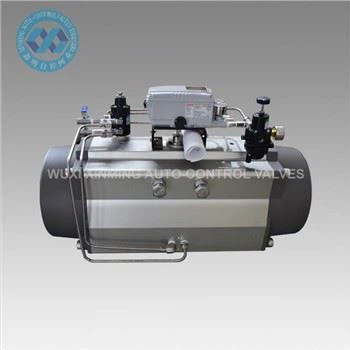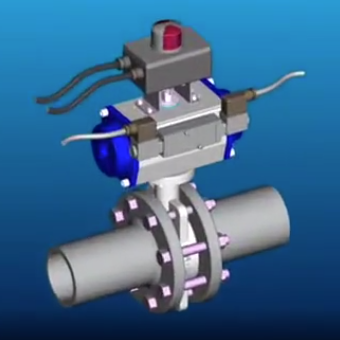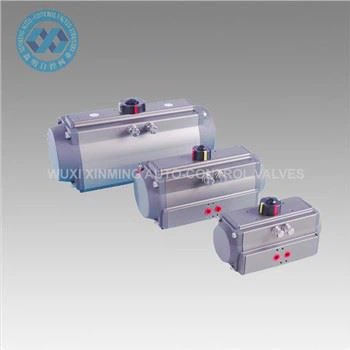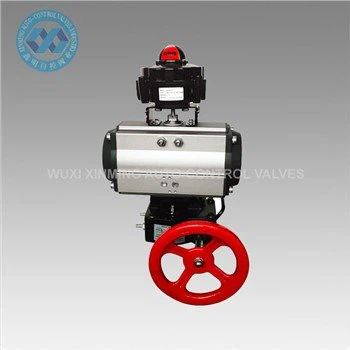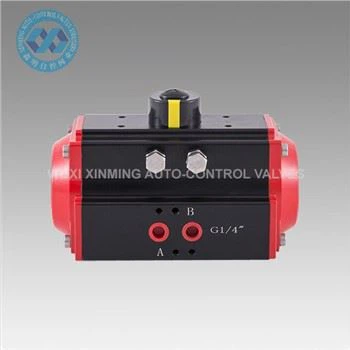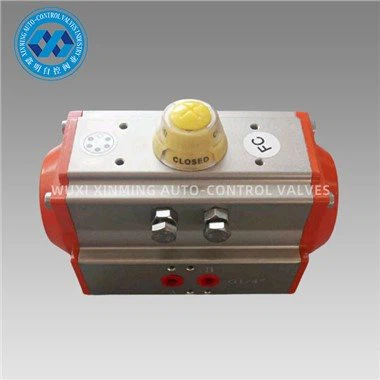Introduction
Pneumatic rotary actuators are essential components in industrial automation, offering reliable rotational motion for valve control, material handling, and robotic applications. Selecting the appropriate actuator requires careful consideration of multiple technical parameters to ensure optimal performance and system efficiency.
Key Selection Criteria
1. Torque Requirements
- Breakaway torque: Initial torque needed to start movement
- Running torque: Continuous torque during operation
- Safety factor: Typically 25-50% above calculated requirements
-
Calculation method: T = (F × r) + Tfriction
Where T = torque (Nm), F = force (N), r = radius (m)
2. Rotation Angle Specifications
3. Actuator Technology Comparison
Rack-and-Pinion Actuators:
- Advantages: High torque, precise positioning
- Disadvantages: Larger footprint
Vane-Type Actuators:
- Advantages: Compact design, smooth operation
- Disadvantages: Limited rotation angle
Scotch Yoke Actuators:
- Advantages: Excellent for high-torque applications
- Disadvantages: Higher maintenance requirements
4. Operating Conditions
- Pressure range: Standard (4-7 bar) vs. low-pressure (1-3 bar) systems
- Temperature limits: Standard (-20°C to 80°C) vs. extreme conditions
- Environmental factors: IP ratings for dust/water protection
- Hazardous areas: ATEX certification requirements
Performance Considerations
Speed and Cycle Life
- Typical operating speeds: 1-2 seconds for 90° rotation
-
Cycle life expectations:
- Standard: 1-5 million cycles
- High-performance: 5-10 million cycles
Mounting Configurations
- Foot-mounted: For stable, fixed installations
- Flange-mounted: For direct valve connection
- Clevis-mounted: For applications requiring some movement
Accessory Integration
Essential Accessories:
- Position sensors (limit switches, proximity sensors)
- Speed control valves
- Air preparation units (filters, regulators)
- Manual override mechanisms
Selection Process Flowchart
- Define application requirements
- Calculate torque needs
- Determine rotation angle
- Select actuator type
- Verify environmental compatibility
- Choose mounting style
- Select necessary accessories
- Finalize with manufacturer specifications
Maintenance and Life Expectancy
-
Preventive maintenance schedule:
- Quarterly: Seal inspection
- Biannually: Bearing lubrication
- Annually: Full performance check
- Typical service life: 5-10 years with proper maintenance
Cost Considerations
- Initial purchase price (30-40% of TCO)
- Energy consumption (20-25%)
- Maintenance costs (15-20%)
- Downtime impact (15-25%)
Conclusion
Selecting the optimal pneumatic rotary actuator requires balancing technical requirements with operational and economic factors. By systematically evaluating torque needs, rotation characteristics, environmental conditions, and lifecycle costs, engineers can ensure reliable, efficient automation solutions. Always consult with manufacturers for application-specific recommendations and verify calculations with real-world testing when possible.
If you want to learn more about low-priced products, please visit the following website: www.xm-valveactuator.com


